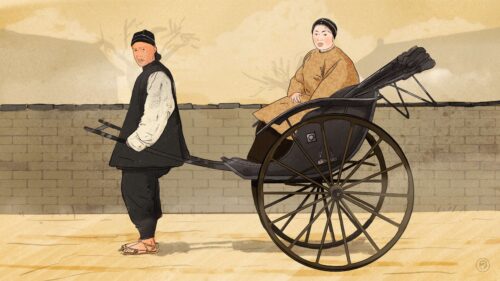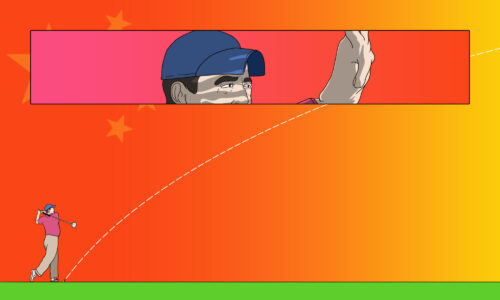This is book No. 18 in Paul French’s Ultimate China Bookshelf.
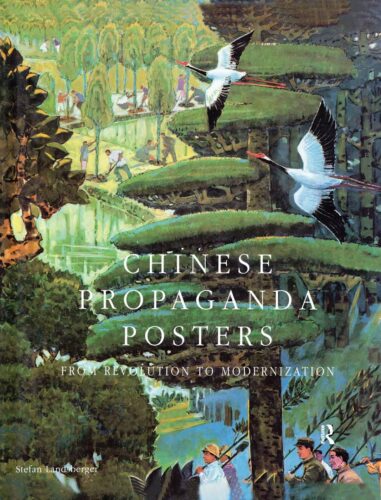
Blurbs:
“A lavishly illustrated study traces the development of the style and content of the Chinese propaganda poster in the decade of reform, from its traditional origins to its use as a tool for political and economic purposes.”
—Routledge
“Stefan Landsberger’s Chinese Propaganda Posters offer a rich collection of Chinese propaganda posters assembled by historian Stefan Landsberger (Leiden University) from his own collection of over 2,000 images.”
—Susan Fernsebner, University of Mary Washington
“Brightly colored prints, portraying model behavior or a better future, have been a ubiquitous element of Chinese political culture from Imperial times to the present. This lavishly illustrated study traces the development of the style and content of the Chinese propaganda poster in the decade of reform, from its traditional origins to its use as a tool for political and economic purposes.”
—Goodreads
About the author:
Born in 1955, Landsberger was educated in the Chinese department at Holland’s Leiden University, from which he has a Ph.D. in Sinology. He is a lecturer at the Documentation and Research Centre for Modern China, Sinological Institute, Leiden University, and his other academic positions include Emeritus Professor of Contemporary Chinese Culture at the University of Amsterdam, an Honorary Fellow at International Institute of Social History, and an invited researcher at Public Service Advertising Research Center within Beijing’s Communication University of China. He is a member of the editorial board of the journal China Information.
The book in 150 words:
Chinese Propaganda Posters is based on Landsberger’s own phenomenal collection, begun in the 1970s and now one of the largest private collections in the world. The resultant book was an extension of Landsberger’s Ph.D. Opening with a brief introduction to the history of graphic propaganda in China, this book presents the posters chronologically, through the building of the People’s Republic, the Korean War, the Great Leap Forward, the Cultural Revolution and its iconic leaders, and the growing acceptance of modernization and economic reforms.
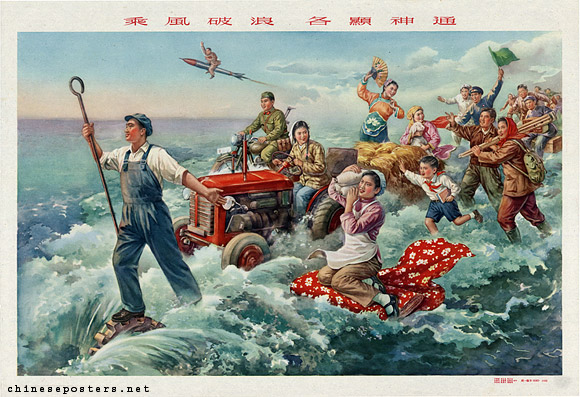
Your free takeaways:
The image that used to prevail in the People’s Republic of China was defined by the political images that were provided by propaganda art. Through all its long history, the Chinese political system used the arts to propagate correct behavior and thought.
Because they were widely available, [propaganda posters] could be seen everywhere. And they were an excellent way to brighten up the otherwise drab places where people lived.
The artists’ aim was to portray the future in the present, not only showing “life as it really is,” but also “life as it ought to be.”
Most of the posters served strictly utilitarian, abstract goals: they glorified work and personal sacrifice for the great well-being. At the same time, they paid scant attention to the personal and private dimensions of people’s lives, to rest and recreation.
Why this book should be on your China bookshelf:
We have considered Maoism from several angles — Mao’s life through Jonathan Spence’s biography of him; his own words and aphorisms in his collected quotations in the Little Red Book; and the Marxist-Leninist orthodoxy that he became integral to after 1949 in his colleague (until they weren’t…) Liu Shaoqi’s writings. But Maoism and the Maoist decades and campaigns were as much visual as they were literary, if not indeed perhaps more so.
Landsberger’s collection of images (mostly from his own personal collection) are amazing, but they are also placed in the context of China’s historically didactic use of art and imagery over centuries. This propaganda art from the Maoist period is crucial to our understanding of modern China because the images were concrete expressions of Communist Party policy and the desire to build the cult of personality around primarily Mao, but also other leading Party figures. China still had a high illiteracy rate in the 1940s and 1950s, especially in the countryside, and so visual stimuli and propaganda took on an especially important role in communicating everything from loyalty to family planning, culture to international affairs. They were also decorative — replacing the yuèfènpái 月份牌 (calendar girls) or illustrations of various gods of the pre-1949 era (indeed, many of the same artists painted all three types of popular art) — found in houses to add color and cover bare walls.
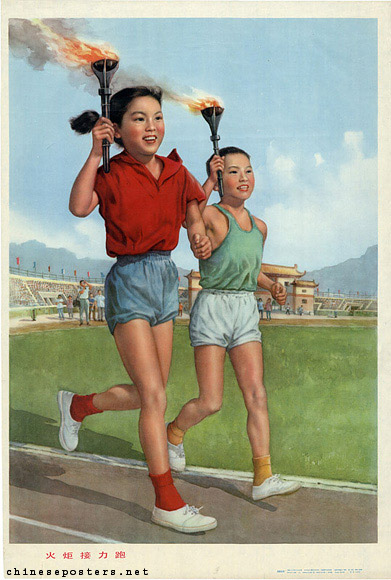
Landsberger’s notes accompanying the images mention the hyper-real nature of many representations of peasants, soldiers, youth — ageless, dynamic. Landsberger also stresses the metaphors in the artworks — a strong and healthy productive class, the almost nonexistent differences in gender distinctions (women were invariably “masculinized” in the propaganda posters, in stark contrast to pre-war yuefenpai).
The use of the propaganda poster, and the artists’ output, reached a peak in the Cultural Revolution, and Landsberger stresses the connection the image of Mao appears to have made with ordinary people, making him a feature of just about every home, workplace, and school — an estimated 2.2 billion images of Mao were reproduced in the Cultural Revolution alone. Landsberger, though, notes that the posters began to wane, both in number and propaganda power, in the 1980s — fewer campaigns, less stress of cults of personality, new forms of art and entertainment entering the home. By the turn of the century, politics was on the back foot (though not for dissidents and transgressors, obviously) and consumerism rampant. The poster went from everyday political messaging to kitsch — via Warhol and then souvenir markets, collectors, and purchasers of art books.
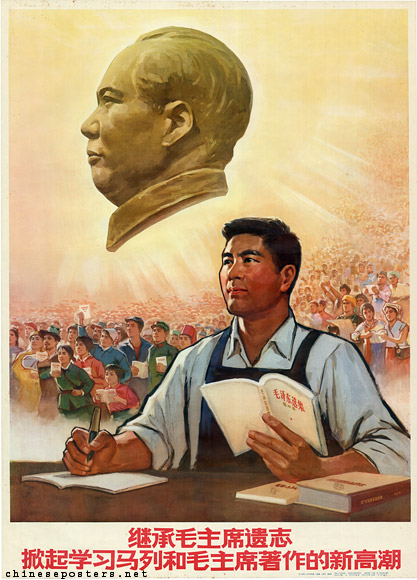
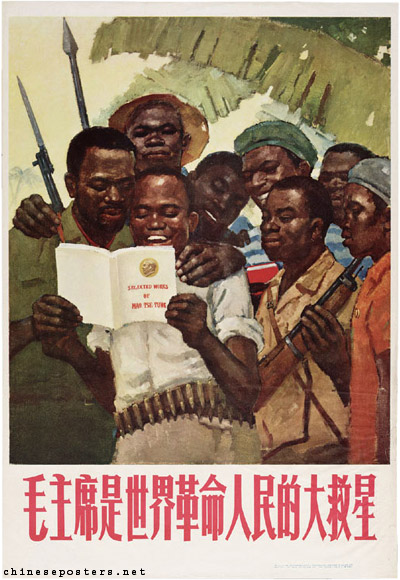
However, the propaganda poster — along with patriotic films such as The Red Detachment of Women, revolutionary opera, ballets, chapbooks, and other media — once encouraged a unity of nation and thought that became a universally recognized aesthetic that, while it has ultimately outlived its usefulness as a motivational tool, has remained popular and intriguing to many later generations that have grown up after the era of the posters themselves.
Next time:
Time to take a break from Maoism and the internal struggles of 20th-century communist China and look at a series of Chinese writers — novelists and thinkers — who interpreted in different ways their country to the outside world, who were all bestsellers, and whose reputations and legacies have been largely positive — even if their fortunes have swung with the times, with some better remembered than others. There was, in the 20th century, a desire to push back against China being interpreted solely by foreigners and to go direct to overseas audiences. We start with perhaps the best loved and most revered female novelist from China, who is still being regularly translated and admired…
Check out the other titles on Paul French’s Ultimate China Bookshelf.


